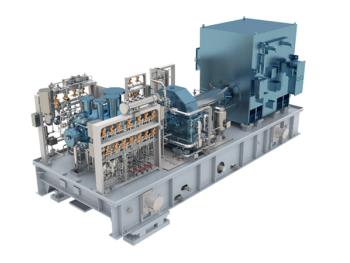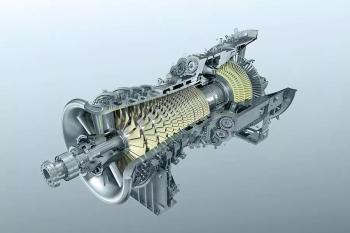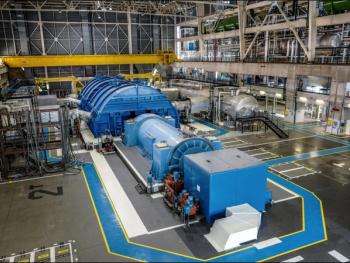
- January/February 2023
- Volume 64
- Issue 1
Hydraulic Actuator Tips
How to operate and troubleshoot hydraulic systems for turbomachinery
Hydraulic systems and hydraulic actuators are robust, reliable, and high performance compared to other types of actuators and systems. This column reveals useful guidelines for hydraulic systems and hydraulic actuators. They offer stiff stroke and operation. Wellconstructed hydraulic actuators are dust tight, and usable in challenging environments.
HYDRAULIC SYSTEMS & ACTUATORS
There are a variety of types and models of hydraulic actuators and systems used in turbomachinery. In hydraulic systems, fluid pressure can be changed to supply different force or torque. This permits more operational flexibility. Linear actuators, hydraulic pistons, and cylinders are popular. Hydraulic linear actuators are usually available as double acting or spring return cylinders.
Hydraulic motors or hydraulic drives are used in different applications. They provide high torque and a wide speed range using a compact motor package. Controls are relatively simple, as a valve handles the flowrate and direction of the hydraulic fluid to the hydraulic motor.
OPERATIONAL CONSIDERATIONS
Hydraulic fluids are practically noncompressible inside of hydraulic systems. Therefore, high performance, stiff actuation and operation is attainable. Efficiency of a hydraulic system is relatively low, as heat is generated in normal operation. Initial cost will likely be less than an all electric drive. Therefore, operating expense and maintenance should be factored in when considering the application. There are advantages such as ease with area classifications, smaller sizes, lighter weight, and more which favour hydraulic actuators for specific turbomachinery applications. In these cases, higher load necessitates a hydraulic solution.
There are different control options and valve types for hydraulic system management. However, there are limitations, as the pressurized fluid must be controlled and routed to actuators. Control options therefore may be limited in some hydraulic systems, creating problems related to piping and fluid. There may be environmental concerns in some systems. For instance, the possibility of impacts to piping and tubing, and leakage of hydraulic fluid. Leakage is a common problem afflicting hydraulic systems. This risk requires evaluation and mitigation. Leakage is a common problem afflicting hydraulic systems.
Leakage is a common problem afflicting hydraulic systems.
Another major concern is dirt, debris, and foreign matter in the hydraulic systems. Components for hydraulic actuators require close machining tolerances to maintain effective seal characteristics. An important component of hydraulic actuators is excellent filtration. If done improperly, frequent maintenance is required. Repairs can be difficult, as any foreign material in
the hydraulic piping or lines can cause damage due to very close tolerances.
RELIABILITY, SAFETY & RISKS
Risk management, safety, and reliability are important considerations in hydraulic systems. There is some risk due to tight tolerances in hydraulic actuators or devices. For instance, in the event of fire, the actuators may not operate correctly. The hydraulic fluid used in many hydraulic circuits has a relatively high thermal expansion rate, and the tubing or piping system will have to be protected from possible fire or thermal shocks. Because positive displacement pumps are used in the hydraulic systems of turbomachinery, relief valves are needed. Due to possible thermal expansion, it is necessary to size such a relief valve set to combat thermal over-pressurization.
Incorrectly sized valves, control items, or control valves can result in erratic operation, leading to instability. These include operational problems, vibration, and consequently, wear on devices, valves, and their trims. The force or torque of hydraulic actuators should always be greater than the force required to operate the mechanisms in the turbomachinery. Ample margins are encouraged. When an actuator is fully stroked, it should overcome any breakout force or torque, and internal friction experienced by various sealing components. Undersized hydraulic actuators lock or work sluggishly in these situations.
During commissioning and start-up, it’s likely the hydraulic system contains dirt and debris in the piping, tubing, etc - even after flushing the lines. Flushing might not be effective, permitting damage from foreign matter. Tight tolerances must be factored into risk assessment. Well-planned, multi-stage flushing generates 100% cleanliness of the hydraulic circuit. If there is damage in a hydraulic device due to foreign matter or debris, it’s not enough to simply change the damaged device. The entire hydraulic system should be reevaluated, have its filtration system and cleanliness improved, and reflushed again. There should be a thorough investigation as to where dirt or debris came from, and why the filtration systems or previous flushing was ineffective. Multiple reflushing cycles may be required to ensure a complete clean of the hydraulic system. ■
Articles in this issue
almost 3 years ago
Myth: Methane Leakage Cannot Be Avoidedalmost 3 years ago
Vendor Spotlight: Riverhawkalmost 3 years ago
How PTC-10 Has Evolvedalmost 3 years ago
Recycle Gas Compressor Challengesalmost 3 years ago
LNG Sparks Turbomachinery GrowthNewsletter
Power your knowledge with the latest in turbine technology, engineering advances, and energy solutions—subscribe to Turbomachinery International today.




